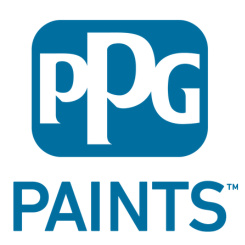Painting By Numbers: Accounting Doesn't Have To Be As Bad As That
13 May, 2020
13 May, 2020

Let’s face it – no one ever set out to start a painting business because they really enjoy bookkeeping and tax work. It’s hardly a shock. Most entrepreneurs think big, seek out challenges and enjoy the rush of being master of their own destiny. By contrast, the technical and detail-oriented nature of accounting can leave a lot to be desired; it’s certainly not anyone’s idea of the best way to spend a Saturday afternoon.
However, the devil is in the details, as they say. Run as hard as you want into the field, into a team meeting or even to (or from!) your in-laws’ house at Easter – you’ll never outrun the fact that somehow, somewhere, you’re going to need those financial reports.
There is hope! It’s not all punching numbers until you want to pull out your teeth. Let’s explore a few of the things that can make this pesky part of business a bit easier... and (dare I say?) even interesting!
 (1).jpg)

System First, Evolution Second
Hurdle number one: Where to begin? If accounting isn’t your forte, it can seem quite daunting, especially if you’re just starting your own business. The fix is simple: just start… somewhere. Your first thoughts should be on knowing how much money you have, knowing how much you’re making and staying on top of your tax obligations. Many contractors who are just starting can achieve these goals with a business checking account, maybe a credit card, and a beginner’s understanding of Excel (don’t fear the spreadsheet!).
As your business grows, you’ll need a more sophisticated system, such as QuickBooks Online. Don’t wait until tax time or a certain revenue amount to get some sort of system in place. Most tax preparers will be able to navigate spreadsheets downloaded from your bank accounts to help you file your returns. Just remember these key takeaways:
● Business and personal expenses need to be separated (this means separate accounts and credit cards!). This is for clarity and to
protect your personal assets from potential issues in the business.
● You still need records of receipts. Bank and credit card statements are proof that you spent money, but the IRS needs to know that your business expenses were “necessary and reasonable.” Itemized receipts provide this context.
● Your biggest enemy at tax time is missing deadlines. The IRS is pretty “reasonable” about most things, but the penalties for missing deadlines can stack up quickly. (Did you know that paying your taxes late is often not very expensive? It’s a 0.25%-0.5% interest rate, vs. the hundreds of dollars in penalties that happen in a snap when you miss a filing deadline.) So don’t wait until the last minute. The early bird catches the savings worm!
“There’s an App for That!”
Once you’ve graduated beyond a certain revenue point, spreadsheets get to be more trouble than they are worth. You’re in luck – a variety of tools, applications and services are available to make this shift to a more detailed tracking system a bit easier. Gone are the days of the carbon copy registers! Nowadays, accounting lives “in the cloud.”
These relatively recent changes have meant major shifts in the accounting industry. It used to be that your “books” existed in a notebook in your accountant’s office downtown. You’d drop off boxes of paperwork and see some updates once a year (or once a quarter if you were lucky). Those updates were static financial reports, which probably didn’t mean much to most business owners.
Contrast that with now, when software like QuickBooks Online will connect directly with most banking and credit card institutions to automatically pull in transaction data; this means less data entry, but you still need someone to organize and verify the information. Applications like HubDoc or Receipt Bank can be used to snap pictures of receipts and important documents, freeing you from the shoeboxes of
paper cluttering your floorboards or desk!
Moving this information online means that your business’s financial information can be updated practically in real time, and in explicitly clear detail. Tools like those mentioned above have resulted in dramatic leaps forward in the quality of information you have available about the health of your business. Budgeting, job costing, payment processing, financing, even your marketing and payroll can all be tied together as part of a virtual ecosystem that is the heart of your business processes. You can manage it from anywhere and everywhere and have answers as soon as you want them.

Cash Flow, PNLs and KPIs … Oh My!
In my everyday practice, I find myself repeating one thing to painting business owners: “You should raise your expectations for your accounting system. As a leader, you’re facing down decisions every day that impact the efficiency and potential of your business. What are you basing these decisions on?”
I’ll give you a hint: The decisions should be based on solid information coming from within your business
about what you’re doing well and where your pain points are. Then, those decisions should be analyzed frequently to determine their impact. (Note: “your gut” wasn’t mentioned. While it might be great at leading the way to the best burger joint in town, the ”follow your gut” method is not an effective growth strategy!)
Once you have your “accounting ecosystem” implemented, you can benefit from frequent check-ins with all components of your business. Running a detailed profit-and-loss (PNL) statement every month allows you to track your performance and spending across seasons and yearover-year, and a little extra insight allows you to “benchmark” your performance against similar businesses or the industry at large.
This allows you to tie red flags back to specific portions of your business that need attention. Gross profit lower than expected? Let’s look at your pricing, your sales closing rates and how you’re estimating (is it on the money or ... not?). If materials aren’t falling in line, it’s time to price shop or negotiate with your major suppliers. You could even decide on a “recommended” product line that you not only price appropriately, but like working with and know that you can sell. Customers will be happy to follow your lead!

For the really engaged owner, take the PNL to the next level by tracking divisions of your business to know exactly how your service mix stacks up. You may be startled to find that the margins on certain components of your work are excellent, but you’ve been overlooking them in your long-term growth strategy (I’m looking at you , cabinet refinishing).
Cash flow tracking and forecasting have never been easier than in the digital age. The most useful components here are essentially the “vital signs” of your business – where is your cash coming from, and how much is going to be leaving in the near and long-term future? Are you too dependent on those customer deposits? Or income might be good, but look out for those loan payments! A knowledgeable eye can help you tie these numbers back to reality and to the day-to-day decisions that will make or break the business.
Key Performance Indicators (KPIs) are a handy reference to the ratios we often examine in business financial reports, a convenient metric that tells us how things are looking and changing for the good or bad. Financial institutions have a standard set, like your Debt-Solvency Ratios, which they use to make lending decisions. Knowing these allow you to plan effectively for growing, selling or keeping your business running like a tight ship.
As you can see, accounting has come a long way from the days of scratching lines into clay tablets! You, the 21st-century painting business owner, have access to unparalleled information and tools to thrive. Don’t overlook the potential they offer, and definitely don’t miss out on the opportunities they bring.




Add new comment